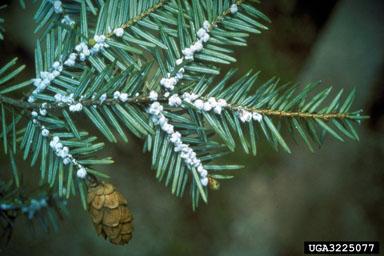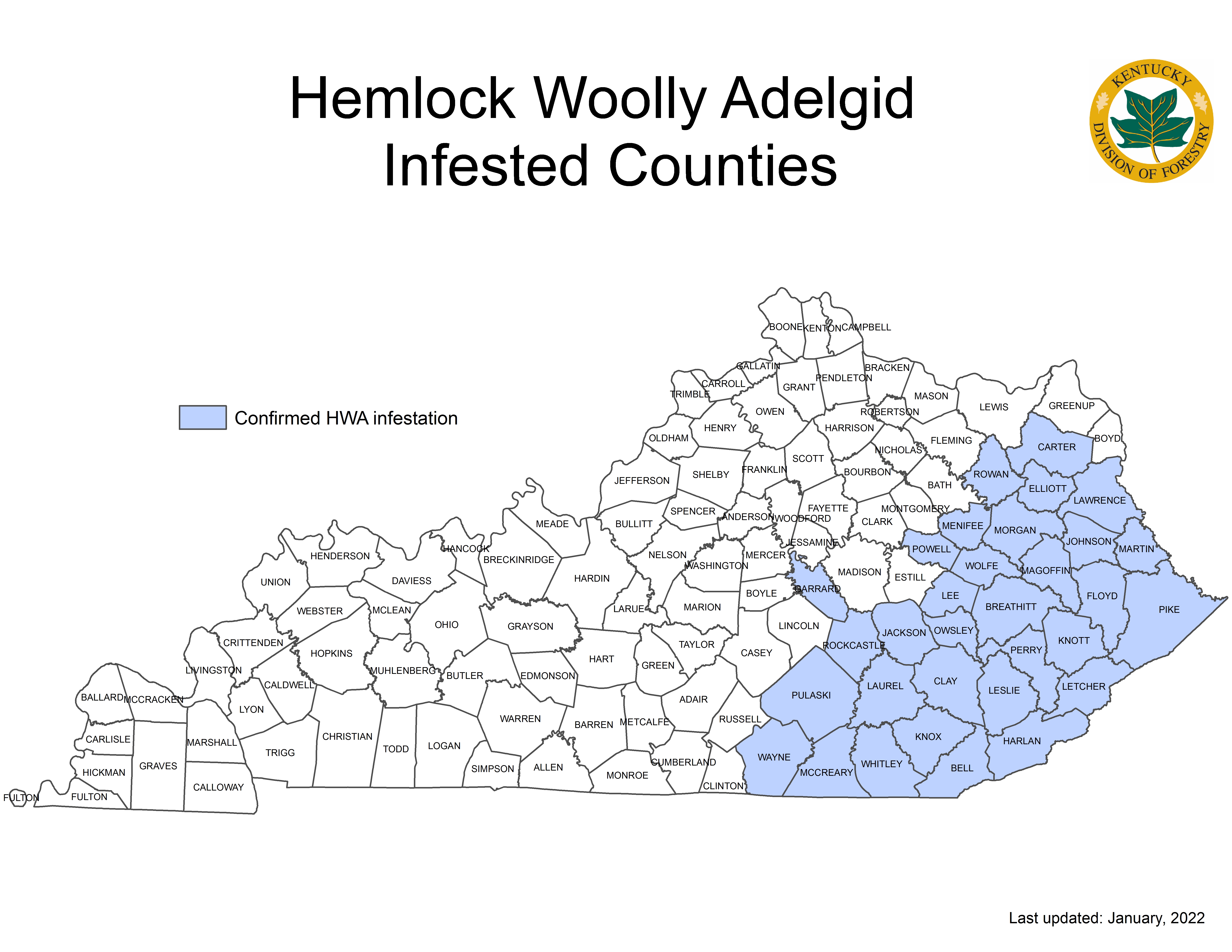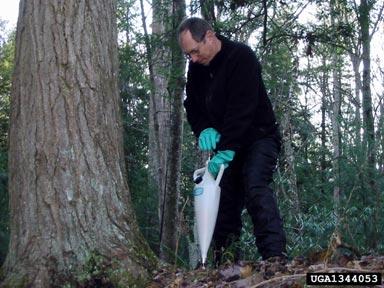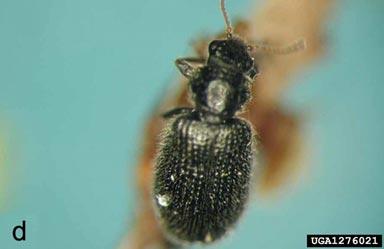Hemlock Woolly Adelgid
Hot Topic: Hemlock Woolly Adelgid
The hemlock woolly adelgid (HWA) is a tiny (1/16-inch long) insect native to Asia. As it matures, the insect covers itself with a

Photo: Connecticut Ag Experiment Station
covering of wool-like wax filaments which can be readily found on the underside tips of hemlock branches from autumn to spring. It was first reported in the eastern United States in 1951 near Richmond, Virginia. By 2005, it was established in portions of 16 states from Maine to Georgia. Birds play a key role in spreading this insect.
These insects are serious pests of eastern hemlock and Carolina hemlock. Hemlocks are killed within 4-10 years of infestation in the insect's northern range and in 3-6 years in its southern range. Hemlock woolly adelgid has infested hemlocks on the Blue Ridge Parkway for about 10 years and in Shenandoah National Park since the late 1980s. In these areas as many as 80% of the hemlocks have died due to infestation. These insects were discovered in the Great Smoky Mountains in 2002. Dead hemlocks can be hazardous and there are now warning signs at many of our Kentucky state parks.

Photo: Janet Lensing
HWA in Kentucky
The hemlock woolly adelgid was discovered for the first time in Kentucky by a member of our office in April 2006, near the boundary of Harlan and Letcher counties. Since the initial discovery, the adelgid has been found in many additional locations in southeastern Kentucky. The map below show counties with known HWA infestations. The map was created and provided by the Kentucky Division of Forestry.

What's Being Done?
Currently, there are three common treatment options: insecticidal soap, imidacloprid soil injections, and biological control using tiny beetles native to the Pacific Northwest that feed on hemlock woolly adelgid. In Kentucky, we have been conducting surveys throughout the eastern part of the state to find infestations. We have treated hemlocks in a few locations with imidacloprid soil injections. This chemical has been shown to protect trees up to 2 years. In one location we used a combination of the soil injections and insecticidal soap.

Photo: Great Smoky Mountains National Park
Resource Management
From 2008-2014, we began a biological control project to try to control this pest. We made field releases of the predatory Laricobius beetle (see photo below) whose larvae attack the egg sacs of the hemlock woolly adelgid.
Kentucky Division of Forestry has since taken over the biological control and chemical treatments of hemlocks. They have established Hemlock Conservation Areas throughout the state and are working to protect the hemlocks. Click below for a news story that was published in 2020 about their program:
Heros for Hemlocks: Saving a Keystone Species from an Invasive Insect

Photo: Ashley Lamb
